Links to external sources may no longer work as intended. The content may not represent the latest thinking in this area or the Society’s current position on the topic.
Synthetic glycobiology
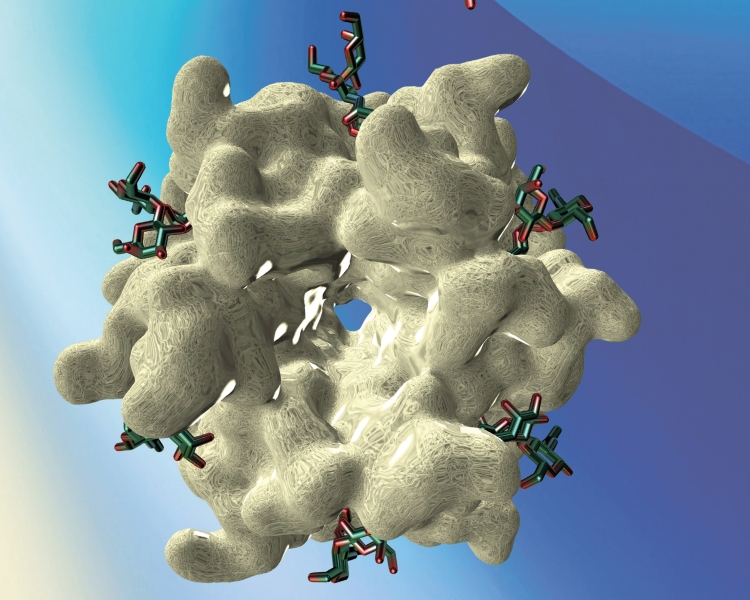
Theo Murphy international scientific meeting organised by Professor Bruce Turnbull, Dr Anne Imberty and Professor Ola Blixt.
Cell surface carbohydrates mediate diverse biological processes including fertilisation, inflammation and invasion by pathogens. Our understanding of glycobiology has advanced remarkably over recent years, raising the prospect of applying the methods of synthetic biology to reengineer these systems for new and useful purposes. This meeting will bring together chemists, biologists and physicists to define the emerging field of synthetic glycobiology.
The schedule of talks and speaker abstracts and biographies are available below. Recorded audio of the presentations is also available below. An accompanying journal issue for this meeting was published in Interface Focus.
Attending this event
This meeting has taken place.
Enquiries: contact the Scientific Programmes team
Organisers
Schedule
Chair

Professor Bruce Turnbull, University of Leeds, UK

Professor Bruce Turnbull, University of Leeds, UK
Bruce Turnbull is a synthetic chemist with interests in synthetic biology. After gaining his BSc and PhD in Chemistry from the University of St Andrews, he held a Wellcome Trust International Prize Travelling Research Fellowship at UCLA and then the University of Leeds, where he has worked since 2001. He was a Royal Society University Research Fellow from 2005 to 2013 and is now Professor of Biomolecular Chemistry. Bruce led an EU COST Action network that brought together over 60 research groups from 21 countries to pursue interdisciplinary projects in ‘multivalent glycosystems for nanoscience’. He also coordinated an ERASynBio consortium whose aim was to establish methods for synthetic glycobiology. Bruce’s current research interests encompass the use of chemical and enzymatic methods to make and modify carbohydrates and proteins for use in targeted delivery and synthetic biology.
| 09:10 - 09:35 |
Lectin engineering: possibilities and perspectives
Lectins are a wide group of sugar-binding proteins occurring in all kinds of organisms including animals, plants, bacteria, fungi and even viruses. According to a recent report, the number of lectin scaffolds (~Pfam), of which 3D-structures are known and sugar-binding functions have been confirmed in literature, exceeds 50, which is far beyond our image in the 20th century. This fact suggests that new lectins will be discovered either by a conventional screening approach or just by chance like in the case of POMGnT1 stem region. It is also expectable that new lectin domains are generated in the future of evolution, although such an attempt has never been done at an experimental level. Based on the current states of the art, various ways of lectin engineering are available, by which lectin specificity and/or stability can be improved with the known lectin scaffold. However, the above observation implies that any other protein scaffold, which has never been described as lectin, is entitled to acquire a sugar-binding function. In this presentation, possible approaches and new items to create sugar-binding properties of synthetic peptides will be described. 
Professor Jun Hirabayashi, National Institute of Advanced Industrial Science and Technology, Japan

Professor Jun Hirabayashi, National Institute of Advanced Industrial Science and Technology, JapanJun Hirabayashi graduated from Tohoku University, Faculty of Science, Department of Chemistry, in 1980, where he also received a master degree in 1982 and PhD in science in 1989. He started his professional career from 1982 in Teikyo University, Faculty of Pharmaceutical Sciences with a focus on animal lectins and joined an international statement of naming and definition of ‘galectins’ in 1994. He is one of the proposers of ‘glycome’ project with a model animal, C. elegans in 1998. To develop lectin-based glycomics technologies, eg, frontal affinity chromatography and lectin microarray, he moved to National Institute of Advanced Industrial Science and Technology in 2002, where he was involved in a series of national projects under METI as a team leader of Research Center for Glycotechnology (2002-), deputy director of Research Center for Medical Glycomics (2006-), prime senior researcher of Research Center for Stem Cell Engineering (2012-). Since 2015, he is a prime senior researcher of Biotechnology Research Institute of Drug Discovery and is involved in lectin engineering in both terms of pure and applied sciences. He is also a visiting professor of Kagawa University (2003-present). |
|
|---|---|---|
| 09:35 - 09:45 | Discussion | |
| 09:45 - 10:10 |
Computer-aided engineering of reprogrammed carbohydrate-active enzymes for biotechnological applications
Combined with chemical synthesis, the use of biocatalysts holds great potential to open the way to molecular diversity. Nonetheless, the lack of appropriate enzymatic tools with requisite properties has hampered extensive exploration of chemo-enzymatic routes to complex carbohydrates. To circumvent this limitation, protein engineering has proven to be very efficient to tailor enzymes with novel substrate specificities. However, the outcome of protein engineering strategies strongly depends on our understanding of enzyme catalysis and our comprehension of the inter-relationships between protein structure, activity and dynamics. Herein, Dr André reports the latest work of her laboratory in the development of 'programmed' chemo-enzymatic pathways that take advantage of both knowledge-based and computer-aided enzyme engineering to produce complex microbial cell-surface oligosaccharides entering in the composition of multivalent vaccines to prevent shigellosis. This lecture will cover and discuss recent developments of Dr André's laboratory. This work was partially funded by the French National Research Agency (Project GLUCODESIGN ANR-08-PCVI-0002-02; Project CARBUNIVAX ANR-15-CE07-0019-01). 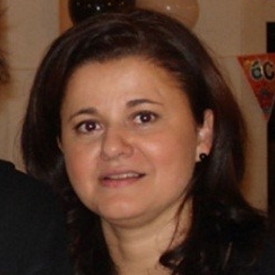
Dr Isabelle André, Laboratoire d'Ingénierie des Systèmes Biologiques et des Procédés, France

Dr Isabelle André, Laboratoire d'Ingénierie des Systèmes Biologiques et des Procédés, FranceIsabelle André received a PhD in Molecular Chemistry in 1995 from the University of Grenoble (France). She then held a post-doctoral position at the Instituto Rocasolano in Madrid, Spain. From 1997 to 2003, she worked for GLYCODesign Inc., a Canadian biopharmaceutical company. Upon her return to France, she joined the CNRS in 2005 as a Research Scientist. She completed her habilitation at the University of Toulouse and she was promoted to Research Director at CNRS in 2011. She is currently working at the Bioprocess and Bioengineering Laboratory (LISBP-INSA) in Toulouse (France) where she leads the Molecular Modelling and Design group in the Catalysis and Molecular Enzyme Engineering department. She has published >70 research papers, 4 reviews, 3 book chapters and filed 14 patents. Her research interests include understanding enzyme mechanisms and structure–dynamics–activity relationships, developing molecular modelling methodologies to assist protein design, and engineering of biocatalysts for white biotechnology. |
|
| 10:10 - 10:20 | Discussion | |
| 10:20 - 10:50 | Coffee | |
| 10:50 - 11:15 |
Non-canonical amino acids as building blocks for lectins
Lectins are carbohydrate binding proteins with a high specificity for their target ligands. They play diverse roles in cellular recognition and signalling processes, as well as in infections and cancer metastasis. Due to their high specificity, lectins find application in biotechnology and medicine for eg blood group typing, purification of glycoproteins or -lipids and as markers, that target cancer cells. In some applications, lectins must be immobilised on a solid support for purification processes or they have to be conjugated with other molecules. However, traditional conjugation reactions are unspecific and in most cases the site of conjugation cannot be pre-defined. Therefore, Dr Wiltschi and her group devised lectins containing non-canonical amino acids with bioorthogonal reactive handles, with which these can be conjugated with other molecules in a pre-defined manner. As a proof of principle, the group conjugated these lectins with small molecules and other lectins. The conjugate lectins might be useful for any process, where lectins shall be conjugated with another module in a pre-defined and site-specific manner. 
Dr Birgit Wiltschi, Austrian Centre of Industrial Biotechnology, Austria

Dr Birgit Wiltschi, Austrian Centre of Industrial Biotechnology, AustriaBirgit Wiltschi received a PhD in Biochemistry from Graz University of Technology in Austria. She continued her scientific work as a postdoc at the Max Planck Institute of Biochemistry in Martinsried, Germany and afterwards was a group leader at the Albert-Ludwigs University of Freiburg, Germany. Currently, she heads the Synthetic Biology Group at the Austrian Centre of Industrial Biotechnology in Graz, Austria. Her research focusses on the engineering of proteins using unnatural amino acids. |
|
| 11:15 - 11:25 | Discussion | |
| 11:25 - 11:50 |
Lectin-mediated protocell crosslinking and fusion
Synthetic membrane systems are extremely useful for the better understanding of complex cellular structures and processes. The engineering of proto-tissues from proto-cells through lectin-glycan interactions represents an important step towards synthetic minimal tissues. As a first step, Professor Römer's group succeeded in integrating natural and synthetic glyco-modules into giant unilamellar vesicles, which then were specifically recognized by lectins. In a second step, multivalent lectins with opposing carbohydrate binding sites triggered the crosslinking of glycan-functionalised vesicles. The crosslinking process drives the progression from contact puncta into elongated proto-cellular junctions, which form the vesicles into polygonal clusters resembling tissues. Due to their carbohydrate specificity, different lectins can be engaged in parallel with both natural and synthetic glyco-conjugates to generate complex interfaces with distinct lectin domains. In addition, the formation of proto-cellular junctions can be combined with adhesion to a functionalised support by other ligand-receptor interactions to render increased stability against fluid flow. The group also assembled proto-cells to proto-tissues by employing a chimeric, bispecific lectin, with two rationally oriented and distinct recognition surfaces (from A Imberty). This lectin, coined Janus lectin in allusion to the two-faced roman god, is able to bind independently to both fucosylated and sialylated glyco-conjugates. 
Professor Winfried Römer, University of Freiburg, Germany

Professor Winfried Römer, University of Freiburg, GermanyWinfried Römer has been Professor of Cell and Synthetic Biology at the University of Freiburg, Germany since April 2011 and heads the research group 'Synthetic Biology of Signalling Processes' at the Faculty of Biology and the Centre for Biological Signalling Studies (BIOSS). His research focuses on host-pathogen interactions; in particular, he is interested in understanding the impact of bacterial lectins on host cell physiology by using analytical and synthetic approaches. From 1996-2001, he studied chemistry and biology at the University of Regensburg, Germany. During his PhD studies (2001-2004) he developed novel pore-suspending membrane systems and reconstituted successfully functional membrane proteins. During his time as post-doctoral fellow (2004-2008) and as research scientist CNRS (2008-2011) at Curie Institute, Paris, France he discovered a novel uptake pathway used by several toxins and viruses. Together with a colleague, he was awarded the Pfizer Foundation Research Price (Infectiology) in 2011. |
|
| 11:50 - 12:00 | Discussion |
Chair

Professor Ola Blixt, University of Copenhagen, Denmark

Professor Ola Blixt, University of Copenhagen, Denmark
Ola Blixt is an organic chemist with strong interests in synthetic glycochemistry and applied glycosciences. After gaining his PhD in Organic Chemistry from the Swedish University of Agricultural Sciences, he spent eight years at The Scripps Research Institute, La Jolla, USA. Since 2007 Ola has held several academic positions at the University of Copenhagen and is currently Professor at the Department of Chemistry.
Glycosylation is crucial for interaction with the microbial environment as well as for immunity and protection. To understand these dynamic interactions, his group has developed new synthetic and analytical technologies to increase knowledge and translate basic science to diagnostics and medical applications. Ola's expertise spans over several disciplines ranging from organic synthesis of carbohydrates, peptides and lipids, molecular and cell biology, monoclonal antibodies, phage display and analytical microarray and bead technologies. He has a broad collaborative portfolio and has participated in many EU applications.
| 14:10 - 14:35 |
Nanoglycobiology based on the S-layer system
Molecular self-assembly systems that exploit the manufacturing precision of biological systems are valuable building blocks in synthetic glycobiology. Two-dimensional crystalline-cell surface (S-) layers have evolved in bacteria as a stable cell surface display system for protein epitopes and attached glycans. S-layers are formed by self-assembly of constituting monomers and can be utilised as nanometer-scaled patterning elements in bottom-up approaches. By combining S-layer-inherent features with the Campylobacter jejuni glycosylation machinery and E. coli O-antigen biosynthesis, respectively, the group created in a proof-of-principle study, novel biocomposites with regular display of non-native carbohydrates. The glyco-engineered S-layer protein self-assembly system is an attractive approach for periodic and controllable display of glycans and offers a valuable alternative to chemical coupling of glycans. The incorporation of (re)engineered carbohydrates into the S-layer system provides a platform for addressing various questions in the fields of basic and applied research, relating to the areas of biomimetics, drug targeting, vaccine design, or diagnostics. In nanoglycobiology approaches, the group is taking advantage of carbohydrate-active enzymes of bacterial origin, which have unsurpassed diversity in substrate and linkage specificities. This offers new possibilities for engineering of synthetic glycoconjugates, such as equipping these with sialic acid mimics. Key to exploiting the synthetic biology potential of S-layers is the understanding of their three-dimensional structure, and, for cellular approaches, also the structural basis of cell wall anchoring. The group has recently obtained first molecular insights into how the S-layer monomers interact with their cell wall glycopolymer ligand, thereby unravelling a new building block for synthetic glycobiology approaches. 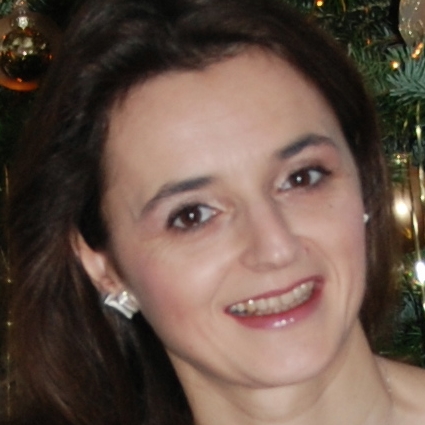
Professor Christina Schäffer, Universität für Bodenkultur Wien, Austria

Professor Christina Schäffer, Universität für Bodenkultur Wien, AustriaChristina Schäffer is Professor at the Department of NanoBiotechnology, Universität für Bodenkultur Wien, Vienna, Austria, where she is leading the NanoGlycobiology research unit. Her research interests are glycobiology-mediated strategies in bacteria and how these influence the cellular building plan and interaction capabilities of bacteria with their habitats and hosts. Specific aims are understanding and exploiting bacterial virulence mechanisms, characterization of metabolic pathways that constitute potential antibiotic targets in order to explore suitable inhibition strategies, and analysis of how glycopolymers aid bacteria in sticking their cell wall together. This includes the characterization, structure-function analysis and production of bacterial glycoconjugates to provide a basis for glycosylation engineering to obtain bioactive, customized glycans for influencing and controlling complex biological systems and to provide frameworks for studying biological phenomena. |
|
|---|---|---|
| 14:35 - 14:45 | Discussion | |
| 14:45 - 15:10 |
Sugary coats: biosyntheses of cell surface complex carbohydrates
Complex carbohydrates are frequently deposited on the cell surface to form cell walls, capsules, or 3-dimensional biofilm matrices. Often, the high molecular weight polymers are synthesised intracellularly and transported across at least one biological membrane by dedicated translocation machineries. Professor Zimmer's group is interested in how polysaccharides are assembled and deposited on the cell surface. In particular, cellulose is a major biofilm component of many Enterobacteriaceae and secreted during its synthesis by the membrane-embedded cellulose synthase, a processive glycosyltransferase. Using the tools of structural and molecular biology, the group delineated the mechanism by which the enzyme elongates a cellulose polymer and translocates it across the membrane through a pore formed by its own transmembrane region. The group is also interested in O antigens, which constitute the variable region of lipopolysaccharides in the outer membrane of Gram-negative bacteria. The polymers are synthesised inside the cell on a lipid anchor and transported to the periplasm by the WzmWzt ABC transporter. Crystal structures of the transporter in nucleotide-free and ATP-bound states suggest a processive translocation mechanism through a channel formed by the transporter. Molecular dynamics simulations suggest that membrane lipids are a fundamental part of the transporter’s function by sealing its channel in a resting state. 
Professor Jochen Zimmer, University of Virginia School of Medicine, USA

Professor Jochen Zimmer, University of Virginia School of Medicine, USAProfessor Jochen Zimmer received his DPhil from the University of Oxford in 2003 which was followed by postdoctoral training in Tom Rapoport's group at Harvard Medical School. He joined the faculty at the University of Virginia in October 2009. His work focuses on the biosynthesis and membrane translocation of cell surface complex carbohydrates involved in the formation of plant cell walls, microbial biofilms and capsules, and the extracellular matrix in vertebrate tissues. His research employs structural and molecular biology approaches to delineate how high molecular weight polymers are deposited on the cell surface. |
|
| 15:10 - 15:20 | Discussion | |
| 15:20 - 15:50 | Tea | |
| 15:50 - 16:15 |
Getting a grip on glycans in guts and roots with chemical probes
The complex layer of glycans called the glycocalyx that covers almost all cells on earth plays an essential role in many inter- and intracellular processes. This layer is also the primary biomolecular boundary encountered by symbiotic and pathogenic microbes when residing in or on their host or trying to infect it. Glycans thus dominate the microbiota-host interface and they are thus ideally positioned to modulate these interactions between the host and its microbiota at the molecular-level. Both plants and humans have a strikingly similar interaction with bacteria when looking at plant roots and the human gut that in both cases is crucial for host health. The aim of Dr Wennekes' research group is to develop smart glycan-based chemical probes, arrays and glycotherapeutic leads to study and perturb the activity of specific glycan subtypes and associated glycowriter (glycosyltransferases), reader (glycan-binding proteins) and eraser (glycosidases) proteins in healthy and pathological microbial host-guest interactions. In this talk Dr Wennekes will discuss three research projects in his group where they investigate glycan readers and writers that are directly or indirectly involved in human-bacteria and plant-bacteria interactions. 1) Towards a glycoarray chip for the rapid diagnosis of Campylobacter jejuni induced cross-reactive antibodies in Guillain-Barré syndrome patient subtypes. 2) Capture and growth of (probiotic) gut microbes on glycan and antibody functionalised porous aluminum oxide microarray chips. 3) Metabolic labeling of glycans in Arabidopsis thaliana. 
Dr Tom Wennekes, Utrecht University, The Netherlands

Dr Tom Wennekes, Utrecht University, The NetherlandsTom Wennekes (b. 1979) is assistant professor at Utrecht University and heads the ‘Chemical Glycobiology’ research group within the Chemical Biology and Drug Discovery Department. He obtained his PhD degree in 2008 at Leiden University in the Bio-organic synthesis group of Hermen Overkleeft and afterwards became a post-doctoral fellow in the group of Steve Withers at the University of British Columbia in Vancouver, Canada. In 2010, he returned to the Netherlands to start his own group as an assistant professor within the Laboratory of Organic Chemistry at Wageningen University and relocated his group to Utrecht University in 2016. His group develops smart glycan-based chemical probes, inhibitors and microarrays to illuminate and perturb the role of glycans, and proteins involved in their life-cycle, in healthy and pathological microbial host-guest interactions. |
|
| 16:15 - 16:25 | Discussion | |
| 16:25 - 16:50 |
Bespoke glycan-presenting surfaces for molecular, supramolecular and cellular interaction studies
Polysaccharides of the glycosaminoglycan (GAGs) family are ubiquitously present at the cell surface and in extracellular matrix, and crucial for matrix assembly, cell-cell and cell-matrix communication. In all these contexts, the supramolecular presentation of GAG chains, on their own or along with other matrix components, is functionally important. Controlling and characterising the supramolecular organization of GAGs, however, poses significant challenges in vivo and in vitro. In this talk Dr Richter shall present methods developed in the lab to create biomimetic surfaces that display GAGs in well-defined yet tunable organizations, and illustrate how these surfaces can be used to provide new insights into fundamental biological questions. Examples that will be covered include the ‘super’selective discrimination of cells by the density of their surface receptors, the formation of chemokine gradients in the context of directed cell migration, and the selective adhesion of circulating cells to the inner wall of blood vessels. 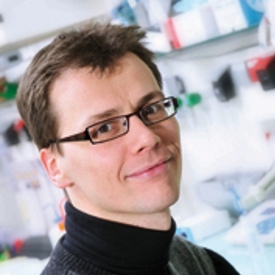
Dr Ralf Richter, University of Leeds, UK

Dr Ralf Richter, University of Leeds, UKRalf Richter obtained his MSc in Physics at Chalmers University (Sweden) in 1999. After an intermezzo in industry, he completed his PhD in Chemistry at the IECB/University of Bordeaux (France) in 2004. Following a postdoctoral stay at the University of Heidelberg (Germany), he became research group leader at CIC biomaGUNE (San Sebastian, Spain) in 2007, and associate professor at the University of Leeds in 2016. Among his awards are a Starting Grant by the European Research Council, and a Chair of Excellence by the Nanosciences Foundation (Grenoble, France). Current research in the Richter Lab revolves around soft biological structures at interfaces, such as the cell surface and glycocalyx and the nuclear pore complex. The Richter Lab creates well-controlled model systems with tunable complexity, to understand the physical principles underlying the self-organization, structure and function of these architectures, and for applications in biomedicine and biotechnology. |
|
| 16:50 - 17:00 | Discussion | |
| 17:00 - 18:00 | Poster session |
Chair

Dr Anne Imberty, Centre National de la Recherche Scientifique, France

Dr Anne Imberty, Centre National de la Recherche Scientifique, France
Dr Imberty is the Director of the Centre de Recherches sur les Macromolécules Végétales (CERMAV), affiliated to the CNRS and University Grenoble Alpes. CERMAV is a research centre of 100 persons devoted to Glycosciences. She graduated in biology from Ecole Normale Supérieure in Paris. In 1984, she joined the CNRS in Grenoble and did her PhD on starch structure. She started modelling studies of protein-carbohydrate interaction during her post-doc in Toronto. Her present interest is focused about microbial lectins and their engineering through synthetic glycobiology strategy for creating new tools in biotechnology, diagnostics and therapy. She received the Young Researcher Award of the French Carbohydrate Society in 1999, the Roy Whistler Award from International Carbohydrate Organisation in 2004, the ‘Charles Dhéré’ Award from French Academy of Sciences in 2011, the silver medal from CNRS in 2013 and the Legion d’Honneur in 2014. She has published more than 300 scientific papers.
| 09:00 - 09:25 |
Glycan antigen decorated Giant Unilamellar Vesicles and live cells reveals distinct interactions with pathogens
Cellular membranes comprise the physical barrier of a cell towards the environment performing a variety of functions, including communication with other cells or pathogens. A large portion of the cell surface constitutes of complex glycans, many with specific adhesion properties. To elucidate such interactions various assay techniques are utilised, a majority based on flat rigid surfaces such as ELISA and microarray glass slides. Spherical cell-size Giant Unilamellar Vesicles (GUVs) are increasingly used as cell models to study membrane interactions. The group has developed a fully synthetic method to produce fluorescently labelled cholesterylated glycopeptides for efficient incorporation into GUV membranes, forming an artificial glycocalyx. With this system the group has begun evaluating membrane receptor interactions with pathogens such as the Malaria infected red blood cells and intact viruses. 
Professor Ola Blixt, University of Copenhagen, Denmark

Professor Ola Blixt, University of Copenhagen, DenmarkOla Blixt is an organic chemist with strong interests in synthetic glycochemistry and applied glycosciences. After gaining his PhD in Organic Chemistry from the Swedish University of Agricultural Sciences, he spent eight years at The Scripps Research Institute, La Jolla, USA. Since 2007 Ola has held several academic positions at the University of Copenhagen and is currently Professor at the Department of Chemistry. Glycosylation is crucial for interaction with the microbial environment as well as for immunity and protection. To understand these dynamic interactions, his group has developed new synthetic and analytical technologies to increase knowledge and translate basic science to diagnostics and medical applications. Ola's expertise spans over several disciplines ranging from organic synthesis of carbohydrates, peptides and lipids, molecular and cell biology, monoclonal antibodies, phage display and analytical microarray and bead technologies. He has a broad collaborative portfolio and has participated in many EU applications. |
|
|---|---|---|
| 09:25 - 09:35 | Discussion | |
| 09:35 - 10:00 |
A glycosylation programme activated via membrane trafficking controls tissue invasion and remodelling
GalNac type O-glycosylation, contrary to N-glycosylation, is typically started in the Golgi apparatus. The polypeptide N-acetyl-Galactosamyl transferases (GALNTs) are initiating the pathway by generating the Tn glycan. GALNTs act on thousands of sites in cell surface and secreted proteins. GALNTs can be relocated from Golgi to the ER upon Src activation, a process called GALA. Dr Bard finds that GALA stimulates the glycosylation of about 20% of detectable glycosites. Roughly 200 proteins and 800 glycosites are strongly affected. Many of these proteins have been implicated in tumorigenesis. One of them is the metalloprotease MMP14, whose glycosylation strongly increases activity. GALA also affects the ER resident protein Calnexin, which is found to also be required for ECM degradation. In a mouse model of liver tumour, stimulating GALA leads to a strong acceleration of tumour progression, while inhibiting it blocks it. In sum, it is proposed that GALA is a glycosylation program that controls matrix degradation and tissue invasion and is required for tissue remodelling during tumour growth. 
Dr Frederic Bard, IMCB, A*Star, Singapore

Dr Frederic Bard, IMCB, A*Star, SingaporeFrederic Bard did his graduate work at Yale University, USA and at the Ecole Normale Superieure of Lyon, France where he obtained his PhD. He worked on the dynamics of the sealing zone, a unique actin cytoskeleton structure in osteoclasts required for bone resorption. During his postdoctoral work at the University of California San Diego (2001-2006), he identified a collection of new genes essential for general protein secretion, the TANGO genes. After starting his group IMCB in 2006, he has established a genome-wide RNAi screening platform. The group has focused on membrane trafficking regulation, Golgi organisation and how signalling at the Golgi can control protein glycosylation. |
|
| 10:00 - 10:10 | Discussion | |
| 10:10 - 10:40 | Coffee | |
| 10:40 - 11:05 |
Chemical tools for engineering glycan interactions at the cell-matrix interface
Glycans (also known as carbohydrates, saccharides or, simply, sugars) are among the most intriguing carriers of biological information in living systems. The structures of glycans not only convey the cells’ physiological state, but also regulate cellular communication and responses by engaging receptors on neighbouring cells and in the extracellular matrix. Despite their structural complexity, individual glycans rarely engage their protein partners with high affinity. Yet, glycans modulate biological processes with exquisite selectivity and specificity. To correctly evaluate glycan interactions and their biological consequences, one needs to look beyond individual glycan structures and consider the entirety of the cell-surface landscape. There, glycans are presented on protein scaffolds, or are linked directly to membrane lipids, forming a complex, hierarchically organised network with specialised functions, called the glycocalyx. Professor Godula's research program focuses on the development of nanoscale glycomaterials, which can mimic the various components of the glycocalyx, together with chemical methods for cell surface engineering to reveal how the presentation of glycans within the glycocalyx can influence their biological functions. In this presentation, Professor Godula will describe the recent efforts in this area, placing emphasis on the applications of glycomaterials to provide new insights into the mechanisms through which glycans mediate cellular differentiation and host-pathogen interactions. 
Professor Kamil Godula, University of California, San Diego, USA

Professor Kamil Godula, University of California, San Diego, USAKamil Godula is an Assistant Professor of Chemistry at UC San Diego. Born and raised in the Czech Republic, he earned his MSc in organic chemistry with William A. Donaldson at Marquette University and his PhD with Dalibor Sames at Columbia University in the area of C-H bond activation. He trained as a postdoctoral fellow with Carolyn Bertozzi at UC Berkeley in chemical glycobiology and nanomaterials. Since 2013, he has led his own research lab at UCSD focused on developing carbohydrate-based nanomaterials for glycomics platforms and chemical approaches for tailoring glycan interactions at cellular boundaries. He is the recipient of the 2011 NIH Pathway to Independence Award and the 2015 NIH Director’s New Innovator Award. In 2017 he was named Alfred P. Sloan Fellow, Cottrell Scholar, and a New Investigator by the ACS Division of Polymeric Materials: Science and Engineering. |
|
| 11:05 - 11:15 | Discussion | |
| 11:15 - 11:40 |
Revealing glycan-mediated interactions through photocrosslinking
Glycan-mediated interactions play critical roles in diverse biology processes. However, glycan-mediated interactions are often low-affinity and transient, impeding their characterisation by traditional biochemistry methods. Using synthetic sugar analogs, Professor Kohler's group has been able to incorporate a photoactivatable function group into glycoconjugates in living cells. Professor Kohler will present data demonstrating that both photocrosslinking GlcNAc and sialic acid can be incorporated into cell surface glycoconjugates in place of natural sugars. Cells metabolically labelled with photocrosslinking sugars can be subjected to UV irradiation, resulting in covalently crosslinking between glycoconjugates and neighbouring molecules. These crosslinked complexes can be characterised by standard biochemistry methods, including immunoblot and mass spectrometry-based proteomics analysis. Professor Kohler will also describe how the group used photocrosslinking sugar technology to determine that cholera toxin subunit B (CTB) recognises fucosylated glycoproteins on the surface of human colonic epithelial cells. The results of these experiments have led to the discovery that fucosylated molecules function in host cell intoxication, and to new fucose-based strategies that can competitively inhibit CTB binding to host cells and potentially block host cell intoxication. Metabolically incorporated photocrosslinking sugars can potentially be used to capture and define many molecular recognition events in which glycans play a critical role. 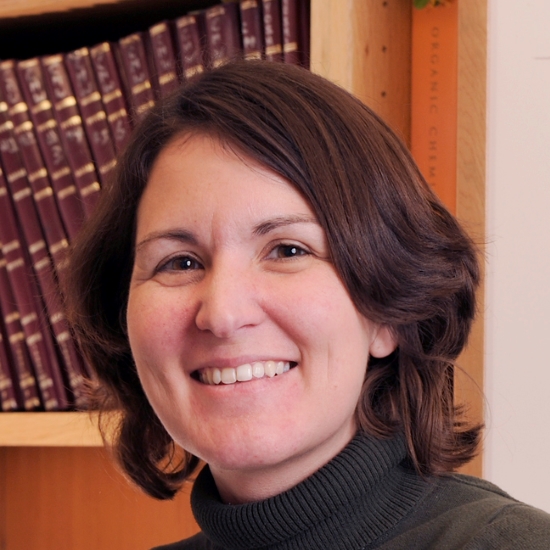
Professor Jennifer Kohler, University of Texan Southwestern Medical Center, USA

Professor Jennifer Kohler, University of Texan Southwestern Medical Center, USAJennifer Kohler graduated from Bryn Mawr College in 1994 and obtained her PhD in chemistry from Yale University in 2000. From 2000 through 2004, she was a postdoctoral fellow in Professor Carolyn Bertozzi’s research group at the University of California, Berkeley. She began her independent research group in the Department of Chemistry at Stanford University in 2005. In 2007, she moved to the University of Texas Southwestern Medical Center where she is now an Associate Professor in the Department of Biochemistry. The Kohler research group develops chemical biology tools and uses them to define the functions of glycosylated molecules. Notably, the group developed photocrosslinking analogues of monosaccharides and has used them to define host cell receptors for bacterial toxins, including cholera toxin. |
|
| 11:40 - 11:50 | Discussion |
Chair

Professor Bruce Turnbull, University of Leeds, UK

Professor Bruce Turnbull, University of Leeds, UK
Bruce Turnbull is a synthetic chemist with interests in synthetic biology. After gaining his BSc and PhD in Chemistry from the University of St Andrews, he held a Wellcome Trust International Prize Travelling Research Fellowship at UCLA and then the University of Leeds, where he has worked since 2001. He was a Royal Society University Research Fellow from 2005 to 2013 and is now Professor of Biomolecular Chemistry. Bruce led an EU COST Action network that brought together over 60 research groups from 21 countries to pursue interdisciplinary projects in ‘multivalent glycosystems for nanoscience’. He also coordinated an ERASynBio consortium whose aim was to establish methods for synthetic glycobiology. Bruce’s current research interests encompass the use of chemical and enzymatic methods to make and modify carbohydrates and proteins for use in targeted delivery and synthetic biology.
| 13:10 - 13:35 |
Identification of glycosylated biomarkers in cancer and new approaches for enhancing responsiveness to anti-cancer treatments
Dr Dwek will describe studies undertaken using lectins to identify proteins showing alterations in O-linked glycosylation in cancer. The strategies taken to identify proteins with altered glycosylation in cancer in both colorectal and breast cancer validated using tissue samples from patients and highlighting commonalities of glycosylation changes in both tumour types will be described. Serum tests for cancer are often based on glycoproteins but in the majority of tests the protein levels are monitored whilst glycosylation is ignored. A glycoproteomic approach was used to identify serum proteins with altered glycosylation in metastatic breast cancer. This was accompanied by development of a rapid screening method with a lectin-based recognition system. In this manner, serum biomarkers were identified – this will be described with respect to VE-cadherin – a biomarker for metastatic oestrogen receptor positive breast cancer. Glycosidases have been identified as mediators of cancer cell invasion and glycosidase inhibitors have emerged as potential compounds for prevention of cancer cell invasion. The pivotal role of the glycocalyx as a barrier, preventing cancer drug interaction at the cell surface, has led to development of a novel biosensor system for studying cell-protein interactions; this will be described alongside recent approaches for enhancing interaction between the drug trastuzumab (Herceptin) and HER2 in breast cancer. The importance of glycosylation in modulating the responsiveness of cancer cells to treatments as well novel approaches to enhancing cancer treatments will be discussed. 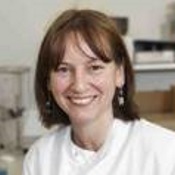
Dr Miriam Dwek, University of Westminster, UK

Dr Miriam Dwek, University of Westminster, UKMiriam read a BSc in Applied Biology, in part-time mode, whilst working in various roles including Process and Product Development at Smith & Nephew Medical, Hull. On graduation she joined the biotech company Oxford Glycosystems as a Manufacturing Scientist preparing complex oligosaccharides by the use of hydrazinolysis for glycan release and separation on diverse chromatography matrices. Oxford Glycosystems was the first spin-out company from the University of Oxford and subsequently became part of the CellTech group. Her time at OGS was her first foray into the field of Glycobiology. Her PhD was undertaken at UCL Medical School in the Department of Surgery with Dr Leathem. The focus was identification of glycosylation changes in aggressive metastatic breast cancer and subsequently focused on proteins that show alterations in glycosylation in cancer using HPLC, lectin and proteomic technologies. After two periods of post-doctoral work she moved to the University of Westminster and set up her own lab where she has been based since 2002. Miriam leads the Cancer Research Group in the Department of Life Sciences, University of Westminster. Her current research interests are in the area of cancer biomarker discovery, the development of new approaches for the in silico and in vitro study of breast cancer behaviour, diet and lifestyle aspects of breast cancer progression. |
|
|---|---|---|
| 13:35 - 13:45 | Discussion | |
| 13:45 - 14:10 |
Specific lectin-based protein glycoprofiling for diagnostics
In this contribution Dr Tkac will describe an alternative to mass spectrometry-based analysis of glycans by the use of lectins for development of various types of bioanalytical devices. Application of lectins allows us to analyse glycans of the glycoproteins directly on an intact protein backbone. There is no need to release glycans from the proteins, which significantly simplifies assay procedure. The devices developed so far are based on electrochemical biosensors, fluorescent lectin microarrays and lectin-based ELLA (Enzyme-linked lectin assays) like platform of analysis. The most recent approach involves the use of magnetic nanoparticles in combination of ELLA for highly sensitive assay format requiring small sample consumption. The potential of lectin-based glycan analysis will be provided by the use of the bioanalytical devices for analysis of serum samples from people who have prostate cancer, breast cancer, rheumatoid arthritis and chronic lymphocytic leukaemia. The clinical potential of magnetic ELLA for diagnostics of prostate cancer will be discussed. The last part of the presentation will show application of glycan biosensors with an immobilised Tn antigen to detect antibodies. Two different approaches were applied for immobilisation of a small glycan either directly to a modified surface (2D biosensor) or to a layer of human serum albumin formed on the surface (3D biosensor) and these two approaches are compared. 
Dr Jan Tkac, Slovak Academy of Sciences, Slovakia

Dr Jan Tkac, Slovak Academy of Sciences, SlovakiaDr Jan Tkac was a postdoc at Linkopings Universitet, Sweden, Lunds Universitet, Sweden and Oxford University. He was recipient of prestigious Marie Curie Individual Fellowship (2003-2006) and ERC Consolidator grant (2013-2017). Currently he is employed at the Institute of Chemistry, Slovak Academy of Sciences with the main research interests in development of novel biosensors and bioanalytical devices based on different detection platforms with integration of nanoparticles. Such devices with immobilized glycans or lectins are applied in the field of glycomics and for early stage diagnostics of various diseases including prostate and breast cancer. The main aim of the research is to look for new possible cancer biomarkers and to develop robust assay protocols applicable for early stage diagnostics. |
|
| 14:10 - 14:20 | Discussion | |
| 14:20 - 14:45 |
Targeting gangliosides using synthetic toxins for pain management
Professor Davletov will present the evidence showing that a chimera made of cholera and botulinum toxins gives long-lasting pain relief in rats without adverse effects and, in time, could replace opioid drugs as a safe and effective way of treating chronic pain. Cholera toxin is known to target GM1 gangliosides present on neurons and the cholera ganglioside binding subunit has been used widely as a strong neuronal tracer. The group deconstructed the botulinum (‘Botox’) molecule, which blocks neuromuscular junctions, and reassembled it with the ganglioside-binding part of the cholera toxin to make Cho-Bot – a compound which successfully targets pain neurons. Injected under the skin just once, Cho-Bot relieves chronic pain induced by a chemotherapeutic drug in a rodent model. It doesn’t affect muscles like the Botox used to reduce wrinkles but it does block nerve pain for up to four months without affecting normal pain responses. Thus Cho-Bot could avoid the adverse events of tolerance and addiction often associated with repeated opioid drug use. Chronic pain of ‘moderate to severe’ intensity is widespread affecting 7.8 million people in the UK and 19% of adult Europeans. Opioids like morphine are considered to be the gold standard for pain relief but there is little evidence that their long-term use is effective in treating chronic pain. In summary, to prepare Cho-Bot the group developed a molecular Lego system which allows us to link the botulinum 'warhead' to a navigation molecule, in this case, the ganglioside binding cholera binding subunit, allowing the creation of widely desired long-lasting pain killer without the side effects of opioids. 
Professor Bazbek Davletov, University of Sheffield, UK

Professor Bazbek Davletov, University of Sheffield, UKBazbek Davletov received his bachelor and master degrees in biochemistry from Moscow State University, 1985. He obtained his PhD from the University of Texas Southwestern Medical Center at Dallas in 1994, where he helped to decipher molecular mechanisms of neuronal communication in the laboratory of Thomas Sudhof, a future Nobel Prize winner (2013). Following postdoctoral research in the Imperial College, London, he moved to Cambridge in 1997 to become a Principal Investigator at the Medical Research Council Laboratory of Molecular Biology. In 2012, Bazbek Davletov took up the Chair of Biomedical Science at the University of Sheffield where he is developing novel tools to treat neurological disorders. Professor Davletov made important contributions to uncovering mechanisms of action of potent neurotoxins, molecular mechanisms of neurotransmission and recently invented 'protein stapling' technology utilizing his knowledge of synaptic proteins and neuronal blockers. |
|
| 14:45 - 14:55 | Discussion | |
| 14:55 - 15:25 | Tea | |
| 15:25 - 15:50 |
Targeting cancer with modified viruses
Conditionally replicating (oncolytic) adenoviruses are promising tools for therapy of solid tumours but their wildtype tropism lacks effective recognition and binding to tumour cells. Genetic modification of the adenoviral fibers has proven difficult since frequently used tumour ligands such as scFvs or TCRs are usually incompatible with synthesis and assembly of adenoviral capsid proteins. In this study, Professor Gerardy-Schahn utilised endosialidase NF (endoNF), the trimeric tailspike protein of bacteriophage K1F, to replace the entire knob part of adenoviral fiber and to facilitate oncolytic adenovirus infection of tumours expressing the cell surface antigen polysialic acid (polySia). For this purpose, the group exchanged the fiber gene locus of the oncolytic adenovirus hTert-Ad by genes for fiber-endoNF fusion protein comprising the fiber capsid anchoring domain and an N-terminally truncated form of endoNF. Functional incorporation of chimeric fibers into the capsids of viral progeny was demonstrated by electron microscopic images of viral particles and detection of endoNF activity on isolated capsids. Chimeric viruses effectively infected cells in a polySia-dependent manner as shown by in an isogenic assay using HEK293 cells with or without polySia expression. Interestingly, the group found that the ability of endoNF to degrade polySia was essential for infection. Investigations on the oncolytic properties in comparison with the maternal virus hTertAd showed significantly improved oncolysis in a polysialic acid-expressing human neuroblastoma cell line and effective inhibition of tumour growth in subcutaneous neuroblastoma in nude mice. In summary, the group's engineered oncolytic adenoviruses with a genetically stable tropism towards polysia-expressing tumours represent promising tools for the treatment of clinically relevant cancers such as small cell lung cancer and neuroblastoma. 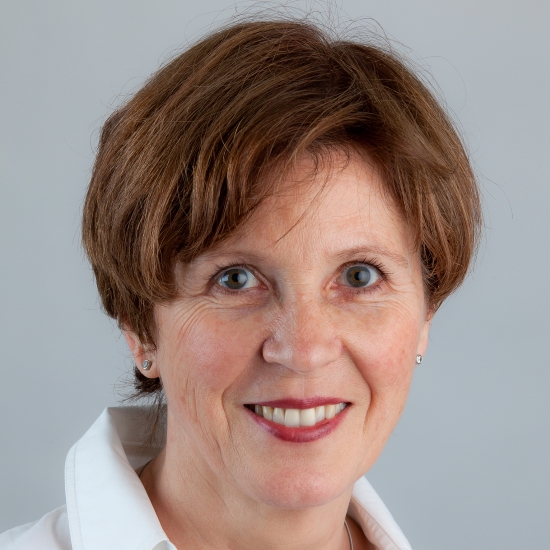
Professor Rita Gerardy-Schahn, Hannover Medical School, Germany

Professor Rita Gerardy-Schahn, Hannover Medical School, GermanyProfessor Gerardy-Schahn’s research focus is the molecular characterization of enzymes along the (poly)sialylation pathways of mammalian and bacterial cells. She identified central factors along these pathways and invested in the establishment of tools, with which (poly)sialoglycans can be specifically recognized and degraded. After functional and - in part structural – characterization, she started with the establishment of constitutive as well as conditional animal models to analyse their functions under complex physiological conditions. Because each identified enzyme/factor opened a new research field, she has built-up a decent research team comprising today 8 independent research groups. Over the past five years Professor Gerardy-Schahn refocused her studies at applied sciences aspects involving the exploitation of cloned enzymes for the production of innovative biomaterials and vaccines. A new focus has been set at the design of viral vectors for tumour targeting. She is an Editorial Board Member for Glycobiology and the Journal of Biological Chemistry. |
|
| 15:50 - 16:00 | Discussion | |
| 16:00 - 17:00 | Panel discussion |
